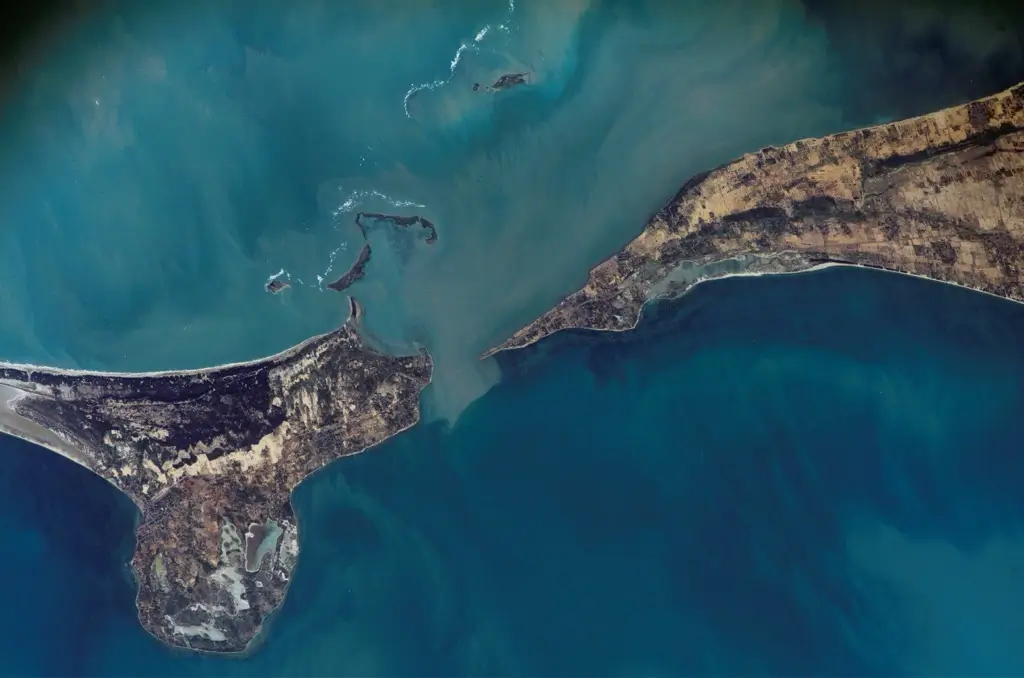
The United Indian

Between India and Sri Lanka lies a mysterious chain of limestone shoals that has captivated the imagination of millions for centuries. Known as Ram Setu Bridge or Adam's Bridge, this geological formation is at the center of a fascinating debate that intertwines myth, history, and science. Is it a natural phenomenon or an ancient man-made wonder? Let's dive into the depths of this controversy and explore the secrets of Ram Setu.
The Legend Behind the Bridge
In Hindu mythology, Ram Setu bridge holds immense religious significance. According to the ancient epic Ramayana, this bridge was constructed by Lord Rama's army to rescue his wife Sita from the demon king Ravana of Lanka. The story goes that Lord Rama's devoted follower, Hanuman, led an army of monkeys and bears to build a bridge across the sea using rocks and boulders. Each stone, when thrown into the water, miraculously floated due to the name of Lord Rama inscribed on it.
This mythological tale has been passed down through generations, cementing Ram Setu's place in Hindu tradition and culture. For many, the bridge represents not just a physical structure but a symbol of devotion, perseverance, and the triumph of good over evil.
Historical Significance
Beyond its mythological importance, Ram Setu bridge has played a significant role in the historical and cultural exchanges between India and Sri Lanka. For centuries, it served as a land bridge, facilitating trade, migration, and cultural diffusion between the two lands.
Archaeological evidence suggests that the region around Ram Setu has been inhabited for thousands of years. Ancient Tamil literature mentions the existence of a land connection between India and Sri Lanka, which aligns with the presence of Ram Setu. This historical context adds another layer of intrigue to the bridge's origins and purpose.
The Scientific Perspective
From a geological standpoint, Ram Setu bridge presents a fascinating subject of study. The bridge is approximately 48 kilometers (30 miles) long and comprises a chain of limestone shoals, sandbanks, and coral reefs. Satellite imagery clearly shows the distinctive curve of the formation stretching from Dhanushkodi on India's southeastern coast to Mannar Island off Sri Lanka.
Geological studies indicate that the bridge's core is composed of a long sand bar which developed into a chain of shoals through a process called tombolo. Tombolos are sand bars that connect an island to the mainland or to another island, formed by wave action and longshore drift.
The Controversy
The controversy surrounding Ram Setu bridge largely stems from differing interpretations of its formation. Let's examine both sides of the argument:
Evidence Supporting a Man-Made Origin:
- Unusual Composition: Some researchers argue that the materials found in Ram Setu bridge are not typical of natural marine formations. They claim to have found evidence of worked stones and materials that suggest human intervention.
- Linear Arrangement: The near-perfect alignment of the shoals has led some to believe that it couldn't have formed naturally. They argue that such precision indicates deliberate construction.
- Ancient Texts: Proponents of the man-made theory often cite references in ancient Indian texts, particularly the Ramayana, as historical evidence of the bridge's construction.
- Underwater Investigations: Some underwater explorations have reportedly found signs of structured stone placement, which has been interpreted as evidence of artificial construction.
Arguments for Natural Formation:
- Geological Processes: Many geologists assert that the formation can be explained by natural geological processes. They argue that the bridge is a result of sedimentation and coral growth over thousands of years.
- Age Discrepancy: Radiocarbon dating of the limestone shoals suggests they are only a few thousand years old, which doesn't align with the timeline of the Ramayana epic.
- Similar Formations: Scientists point out that similar limestone formations exist in other parts of the world, formed entirely by natural processes.
- Satellite Evidence: Analysis of satellite imagery supports the theory of natural formation through sediment accumulation and coral growth.
The Controversy Unfolds
The debate over Ram Setu bridge's origin has not been confined to academic circles. It has spilled over into political and religious domains, making it a sensitive issue in India.
In 2007, the controversy reached its peak when the Indian government proposed the Sethusamudram Shipping Canal Project. This project aimed to create a navigable waterway between India and Sri Lanka by dredging through the shallow waters of Ram Setu. The proposal sparked widespread protests from Hindu groups who viewed it as an attack on their religious beliefs and cultural heritage.
The matter eventually reached the Supreme Court of India, which ordered the government to explore alternative routes for the project that would not damage Ram Setu. This legal battle highlighted the complex interplay between scientific research, religious beliefs, and national development projects.
Scientific Investigations and Findings
Over the years, several scientific studies have been conducted to unravel the mysteries of Ram Setu. Here are some key findings:
- Geological Composition: Studies have shown that the bridge is primarily composed of limestone mixed with sand and coral. This composition is consistent with natural marine formations in the area.
- Age Determination: Radiocarbon dating of the limestone samples collected from Ram Setu suggests that the oldest parts of the structure are approximately 7,000 years old. This timeline postdates the events described in the Ramayana, which are believed to have occurred much earlier.
- Sediment Analysis: Examination of sediment patterns in the region supports the theory of natural formation through longshore drift and coral growth.
- Remote Sensing Data: Satellite imagery and remote sensing techniques have provided valuable insights into the structure and composition of Ram Setu, supporting the natural formation theory.
- Underwater Surveys: While some underwater explorations have claimed to find evidence of artificial structures, these findings remain controversial and have not been widely accepted by the scientific community.
The Cultural Impact
Regardless of its origin, Ram Setu bridge continues to hold immense cultural and religious significance for millions of people. It has inspired art, literature, and even modern-day pilgrimages. Many Hindus view the bridge as a testament to their faith and a physical link to their mythological past.
The controversy surrounding Ram Setu Bridge has also sparked renewed interest in ancient Indian engineering and architectural capabilities. It has led to discussions about the potential advanced technologies that might have existed in ancient times, contributing to a broader dialogue about India's historical achievements.
Moreover, the Ram Setu debate has highlighted the often-complex relationship between science, faith, and national identity in India. It serves as a reminder of the challenges involved in balancing scientific inquiry with cultural sensitivities and religious beliefs.
Conservation Efforts and Future Prospects
As the debate over its origin continues, there is growing concern about the preservation of Ram Setu bridge. Rising sea levels and increased maritime activity in the region pose potential threats to this unique geological formation.
Efforts are underway to have Ram Setu recognized as a UNESCO World Heritage Site, which would afford it greater protection and international recognition. Conservationists argue that regardless of its origin, the bridge represents a unique ecological system that deserves protection.
The ongoing scientific studies of Ram Setu also offer exciting prospects for future discoveries. Advanced technologies like underwater robotics and high-resolution imaging may provide new insights into the structure's composition and formation process.
Conclusion: A Bridge Between Myth and Science
The story of Ram Setu bridge is a fascinating example of how myth, history, and science can intersect and sometimes collide. While the debate over its origin may continue for years to come, what's undeniable is the bridge's significance as a cultural icon and a geological marvel.
Whether formed by divine intervention, ancient engineering, or natural processes, Ram Setu continues to capture our imagination and challenge our understanding of the past. It stands as a testament to the enduring power of mythology and the ever-evolving nature of scientific inquiry.
As we continue to unravel its secrets, Ram Setu reminds us of the importance of approaching such enigmas with an open mind, respecting diverse perspectives while pursuing scientific truth. In doing so, we may find that the bridge's greatest value lies not in resolving the debate of its origin, but in its ability to connect us to our shared human heritage of wonder, faith, and the relentless pursuit of knowledge.
Read more in Recent Events
Jul 18, 2025
TUI Staff
Jul 15, 2025
TUI Staff
Jul 14, 2025
TUI Staff

Stay Tuned with The United Indian!
Our news blog is dedicated to sharing valuable and pertinent content for Indian citizens. Our blog news covering a wide range of categories including technology, environment, government & economy ensures that you stay informed about the topics that matter most. Follow The United Indian to never miss out on the latest trending news in India.
©The United Indian 2024















